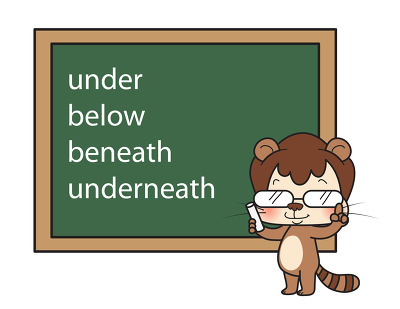The word “underneath” is commonly used in English to describe something positioned below or covered by another object or surface. It can function as a preposition, adverb, noun, and even highlight hidden qualities beneath appearances. This article delves into the meanings, proper usage, examples, and related vocabulary for “underneath,” providing an insightful resource for learners and writers.
Table of Contents
What Does “Underneath” Mean?
“Underneath” means below or beneath something, often covered or hidden by it. It frequently implies physical positioning but can also express a metaphorical sense of what lies beyond surface appearances.
Core Definitions
-
Preposition: Positioned directly below something, often covered by it.
-
Adverb: Situated under, at a lower level or layer.
-
Noun: The underside or bottom part of something.
Physical Use of “Underneath”
“Underneath” most commonly describes a spatial relationship where one object lies beneath another, often hidden from view.
Examples
-
The coins slipped underneath the couch.
-
She hid the letter underneath her jacket.
-
The car has rust underneath the chassis.
Metaphorical Use of “Underneath”
“Underneath” can also reveal what is concealed beneath outward appearances or surfaces, especially relating to personality or qualities.
Examples
-
Underneath her calm demeanor, she was anxious.
-
They appeared different, but underneath, they shared many values.
-
Beneath his gruffness was a caring heart.
How Is “Underneath” Used in Sentences?
As a Preposition
-
The cat is hiding underneath the bed.
-
He slipped the note underneath the door.
As an Adverb
-
She wore a sweater underneath.
-
The ants crawled underneath.
As a Noun
-
The underneath of the table was dusty.
-
The car’s underneath requires inspection.
Synonyms and Related Words for “Underneath”
Synonyms can slightly differ in formality or context but often overlap in meaning:
-
Beneath
-
Below
-
Under
-
Underfoot (more specific to ground level)
-
Underlayer (refers to a layer beneath something)
Antonyms typically include:
-
Above
-
Over
-
On top of
Nuances Between “Underneath” and Related Words
-
Beneath is generally more formal.
-
Under can be more flexible but less emphatic on being covered.
-
Below is often used for levels or rankings rather than physical coverage.
-
“Underneath” emphasizes coverage or being hidden below.
Common Phrases with “Underneath”
-
Slip something underneath
-
Hidden underneath
-
Look underneath
-
The underneath side/surface
Importance of Correct Usage
Choosing “underneath” conveys precise meaning about location or hidden traits. It enriches description in both physical and figurative language.
FAQs about “Underneath”
1. Is “underneath” more formal than “under“?
No, “underneath” is often slightly more emphatic about being covered or hidden, but it is not necessarily more formal. “Beneath” tends to be more formal.
2. Can “underneath” be used figuratively?
Yes, it is often used metaphorically to mean what is hidden under the surface, such as feelings or true nature.
3. What’s the difference between “underneath” and “below”?
“Underneath” usually means physically under and covered, while “below” can indicate a lower level or rank without implying coverage.
4. Can “underneath” be a noun?
Yes, it can refer to the underside or bottom surface of an object.
5. How do you pronounce “underneath”?
It is pronounced /ˌʌndərˈniːθ/.
Conclusion
The word “underneath” serves a versatile role in English, describing physical positions below or covered by other things and revealing hidden qualities beneath appearances. Proper use and understanding of its nuances elevate both everyday and creative communication, making it a valuable addition to vocabulary.

